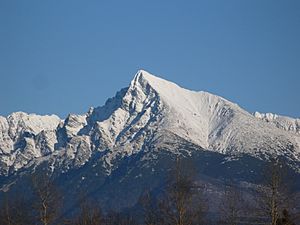National symbols facts for kids


National symbols are special signs or objects that represent a country or a group of people. They help people feel proud and connected to their shared history, values, and goals. Think of them as a country's unique identity card! Sometimes, even groups of people who don't have their own country yet use symbols to show who they are.
These symbols are often celebrated by people to show their love and respect for their nation. They can be anything from a flag waving high to a special animal or even a favorite dish.
Contents
Official National Symbols
Some national symbols are chosen officially by a country's government. These are often used in important documents, ceremonies, and on official buildings.
- National Flag: Almost every country has a unique flag. It's a piece of cloth with special colors and designs that represents the nation. When you see a flag, you know which country it stands for!
- Coat of Arms and Seal: A coat of arms is like a special design or picture that represents a country or a ruling family (a dynasty). A seal is often used on official papers to show they are real and approved by the government.
- National Colors: Many countries have specific colors that are used to represent them, often seen on their flag or sports uniforms.
- National Animals and Plants: Countries often choose a special animal or plant as their symbol. For example, the bald eagle is a symbol of the United States, and the maple leaf is a symbol of Canada. These can be real or even mythical creatures!
- National Anthem: This is a special song that represents a country. It's usually played at important events, like sports games or national holidays.
- Head of State: The main leader of a country, like a president or a king/queen, can also be a symbol of the nation's power and unity.
- Crown Jewels: In countries with a monarchy (where a king or queen rules), special items like crowns and scepters (called regalia) are important symbols of their history and power.
- Founding Fathers: Important historical figures who helped create or build a country are often seen as national symbols. They are sometimes called the "Father of the Nation."
Unofficial National Symbols
Besides official symbols, many countries have unofficial symbols that are loved and recognized by their people. These often come from a country's culture, history, or everyday life.
- National Stories and Myths: Every country has special stories about its past or how it began. These myths and epic tales are often shared from generation to generation and help people understand their heritage.
- National Dishes: Food can be a big part of a country's identity! A national dish is a special meal that many people in a country enjoy and that represents their culture.
- Traditional Dress: Many cultures have unique traditional clothing that people wear for special occasions. This dress can be a strong symbol of their heritage.
- National Holidays: Days like Independence Day or other important celebrations are national holidays. They are a time for people to come together and celebrate their country's history and values.
- National Pastimes: These are popular activities or sports that many people in a country enjoy, like baseball in the USA or cricket in India.
- Folk Heroes and Music: Stories about brave folk heroes, traditional music, and dances are important parts of a nation's culture and identity.
- Famous Landmarks: Well-known monuments or natural places that attract tourists can become symbols of a country. Think of the Eiffel Tower in France or the Great Wall of China.
- National Personifications: Sometimes, a country is represented by a character, like Uncle Sam for the United States or Britannia for the United Kingdom. These characters often show the spirit or qualities of the nation.
- Other Emblems: This can include special plants, animals, or objects that are strongly linked to a nation, even if they aren't officially chosen. For example, the shamrock for Ireland.
- Religious Symbols: In countries where a particular religion is very important, some of its most respected symbols, like a patron saint or a famous temple, might also become national symbols.
Related pages
Images for kids
-
National flag of India
See also
 In Spanish: Símbolo nacional para niños
In Spanish: Símbolo nacional para niños


